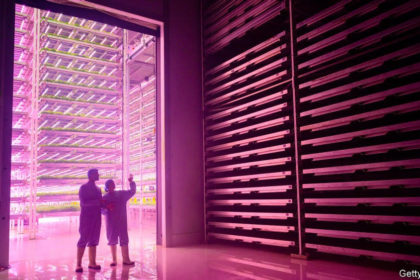
Is carbon the real villain in modern diets? One-third of greenhouse gas emissions come from food production, so companies are turning to technologies like precision fermentation and cell-cultured meat to help create a more sustainable industry. But a transition to alternative proteins won’t be easy.
“The food tech industry has a blind spot,” says John Fasman, U.S. digital editor with The Economist, “they haven’t fully grappled with the fact that food isn’t just fuel, it’s an emotional connection to a lot of people.”
The Economist’s latest cover piece — “Future Food” — explores if and how first-world food systems may adapt. Fasman (who wrote the piece) and Josie Delap (The Economist’s international editor) discussed the business and ethics of alternative proteins in a webinar.
The Conceptual Hurdle of Alt Meat
Though many consumers are adopting flexitarian diets, widespread change isn’t realistic. “Getting people to adjust to their culture expectations of food is a very long task,” Delap adds.
For example, the Thanksgiving turkey or Christmas ham is a holiday tradition consumers aren’t eager to change — and meat substitutes cannot yet deliver. Alternative proteins have come light years from early days of vegetarian “meat” — which was often a flavorless mash of beans and lentils — and now include flavorful and appealing ground meat products. But no one is producing an entire alternative turkey or steak, in which fat, muscle and sinew are layered together.
According to the Good Food Institute, alternative proteins are made by one of three food technologies:
- Plant-based is the oldest form of meat alternatives, using plants to recreate meat flavors.
- Cultivated meat is produced directly from the cells of animals. Muscle cells are taken from a living animal, then multiplied in a lab to create a meat product biologically identical to meat tissue.
- Fermented alternative proteins are made using one of three processes: traditional fermentation (the ancient practice of using microbes in food), biomass fermentation (growing naturally occurring, protein-dense, fast-growing organisms, like fungi or algae) or precision fermentation (uses microbial hosts as “cell factories” to produce specific ingredients.)
“The most striking thing for me as a non-scientist is the extent to which what we eat can be broken into chemical elements and then replicated,” Fasman says. “Replicas of meat look and cook and smell strikingly like meat. You can enhance the flavor through fermentation.”
Consumers have been conditioned to believe foods with too many ingredients are worse for you. Alternative foods create new possibilities — they are built from the ground up, tweaked for nutritional content and made better with supplements. But consumers will have to accept engineered food in order to make a positive environmental impact.
“If you’re going to change the system you’re going to have to reckon with processing at some point and the question is how do you make processing as healthy as possible,” Fasman adds.
Competing on Price
Price is another challenge for alternative proteins. Today, they are often more expensive than meat.
“The risk is that they become a way for middle class and wealthy diners in rich countries to make choices that let them feel good about themselves as opposed to something that really transforms the world’s food system,” Fasman says. “It’s going to be hard for them to compete on price. I don’t think there’s any way around this problem.”
Fasman says the alternative protein industry is at the first stage of a very long process that is made longer by scaling, supply chain, acceptance and regulatory challenges. He estimates it will take at least a decade for alt proteins to compete with meat.
“[Alt-meats] will only be affordable at scale. And that’s why this period right now is the linchpin and it’s so tricky,” Fasman says. Startup companies are operating out of small labs. None of them — outside of Beyond Meat, creator of the Impossible Burger) — is big enough to satisfy a national, or even regional, market. But larger meat companies, like Tyson, Cargill or JBS, have also created meatless products.
Worldwide Adoption
Alternative meat’s acceptance on a global stage is even farther away, agreed Fasman and Delap. Animal-based meat is cheaper in richer countries, and often considered a status symbol or a special occasion dish.
“Burgers are a choice people in middle class cities can make,” Delap says.
Fasman adds that, while it’s unrealistic to think of alt meat being adopted broadly in the short term, it’s a start to offsetting the dangerous greenhouse gas emissions associated with the production of meat.
“Cultured meat, plant-based meat and milk substitutes are in their infancy. You want to scale up where the money and market is,” he says. “There’s a reason to start this process in wealthy countries and then have it flow to the rest of the world from there.”
